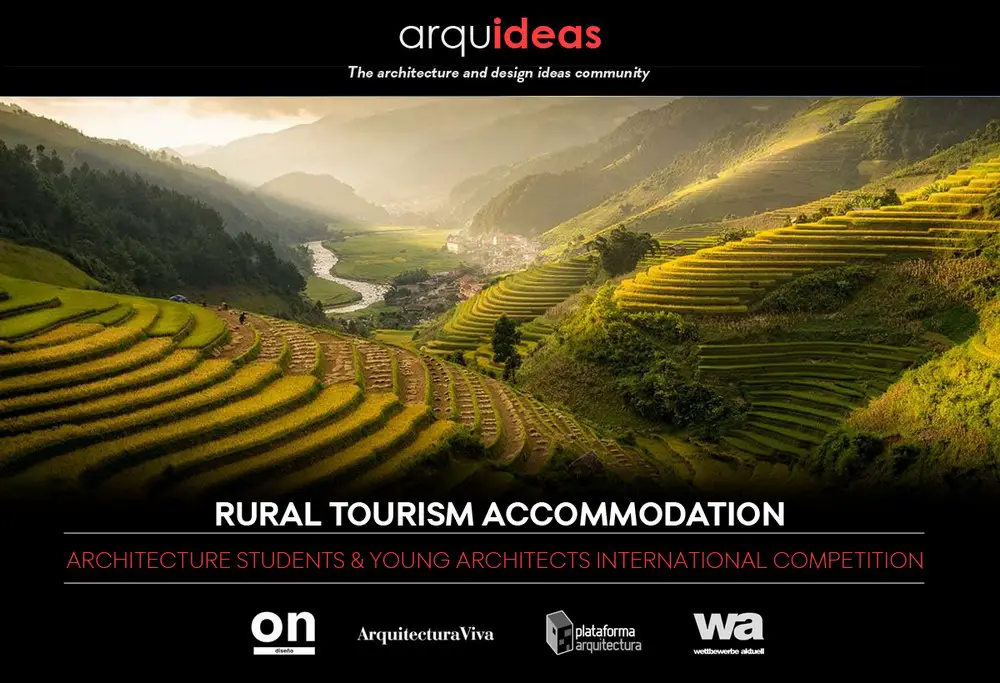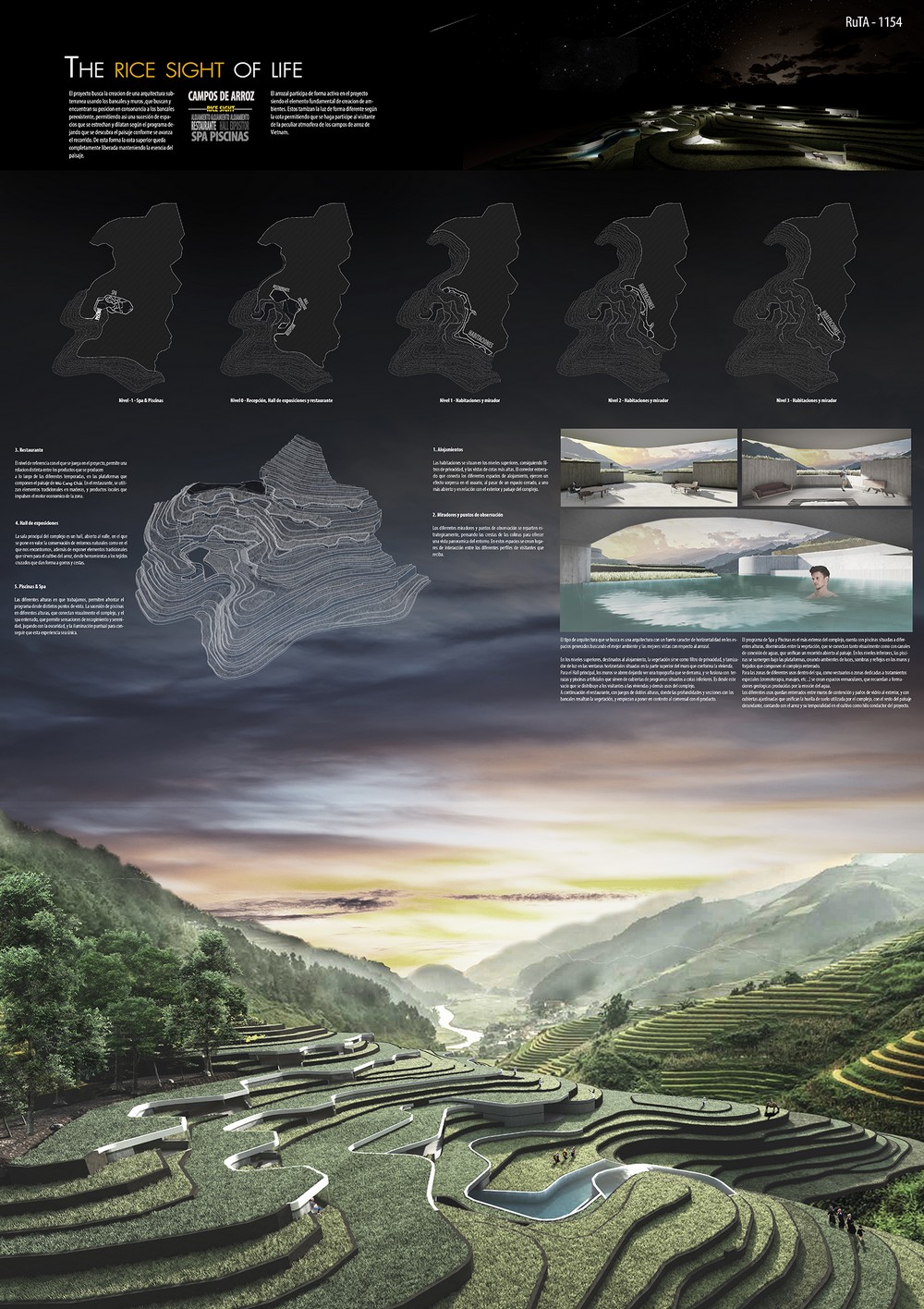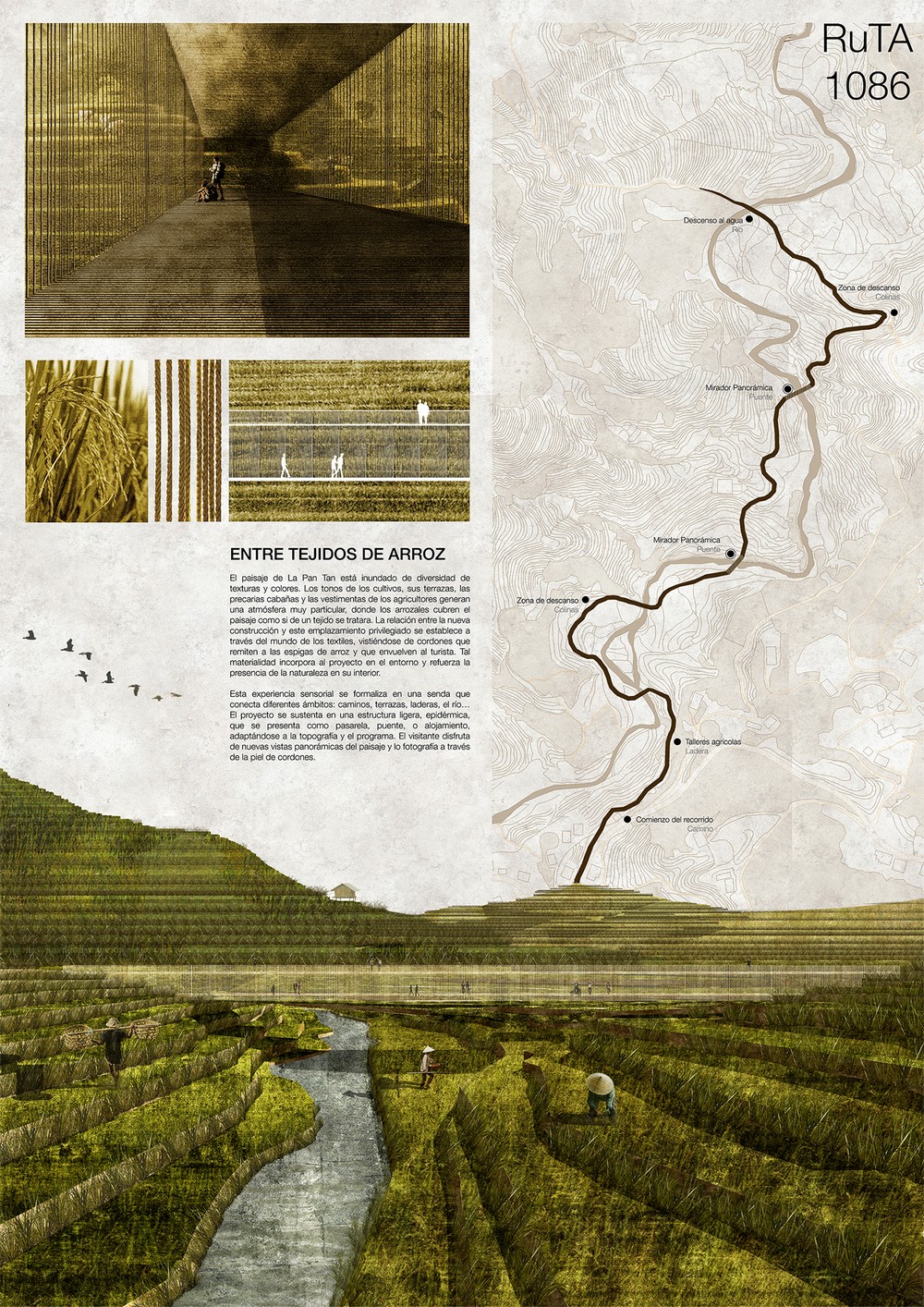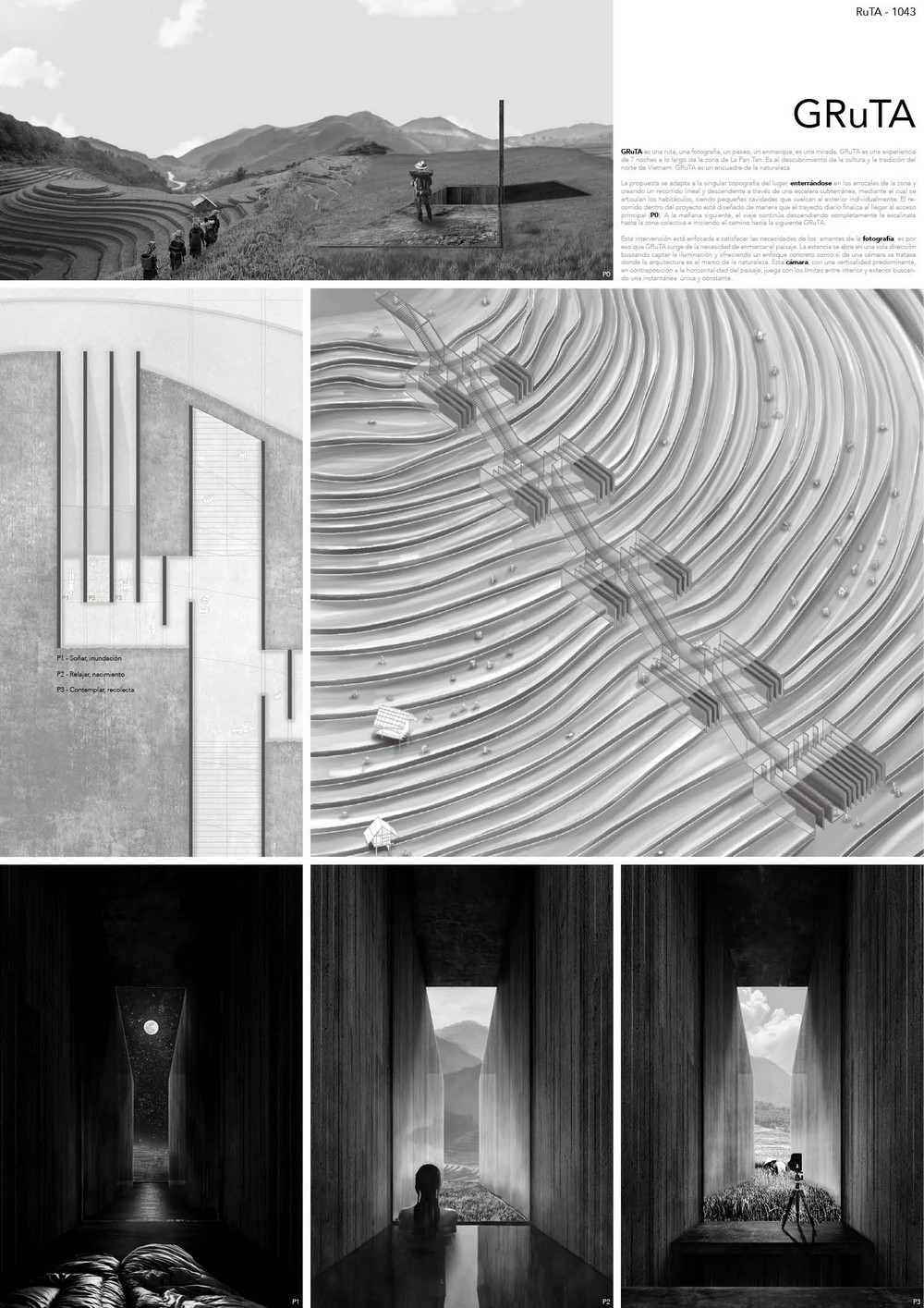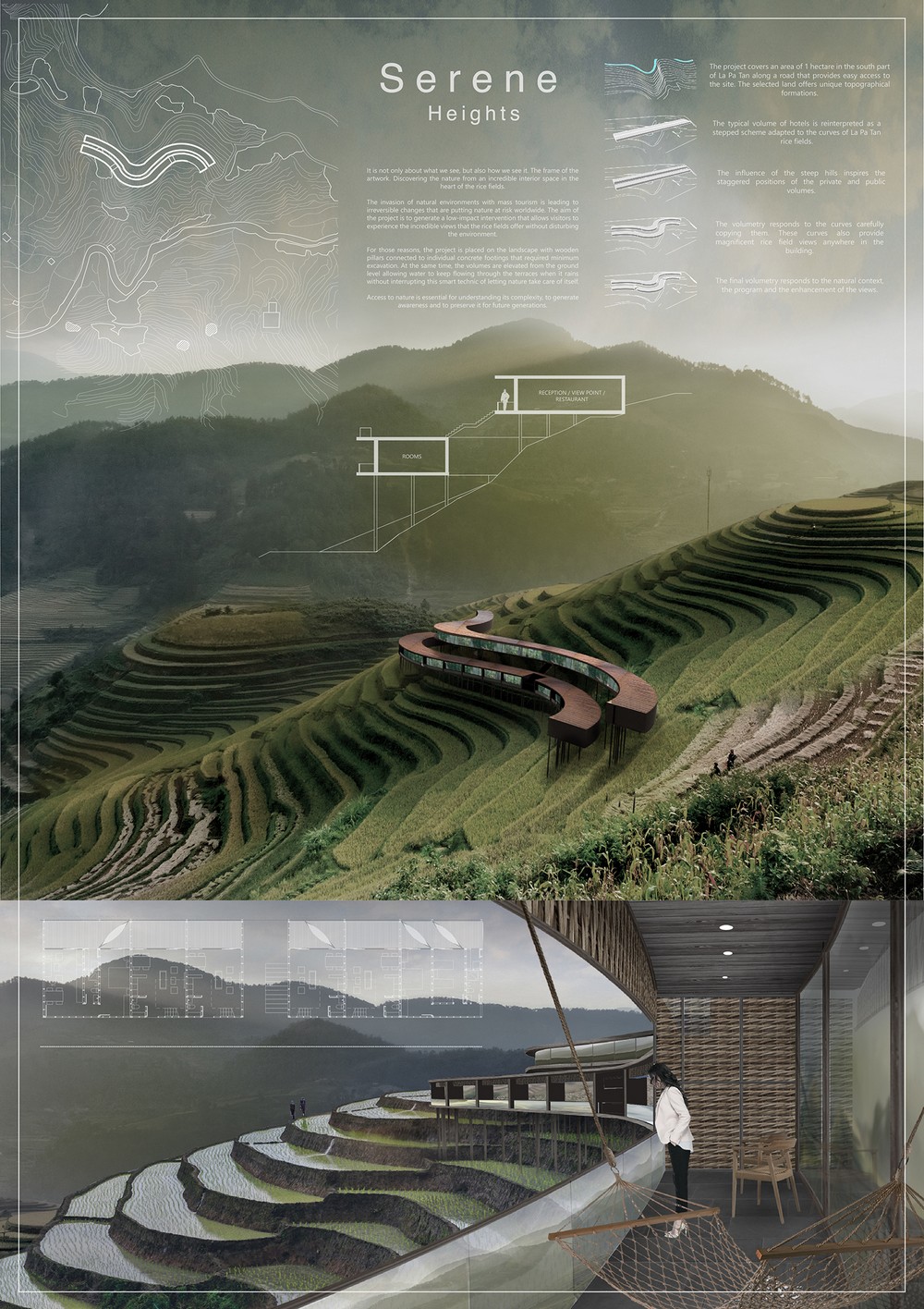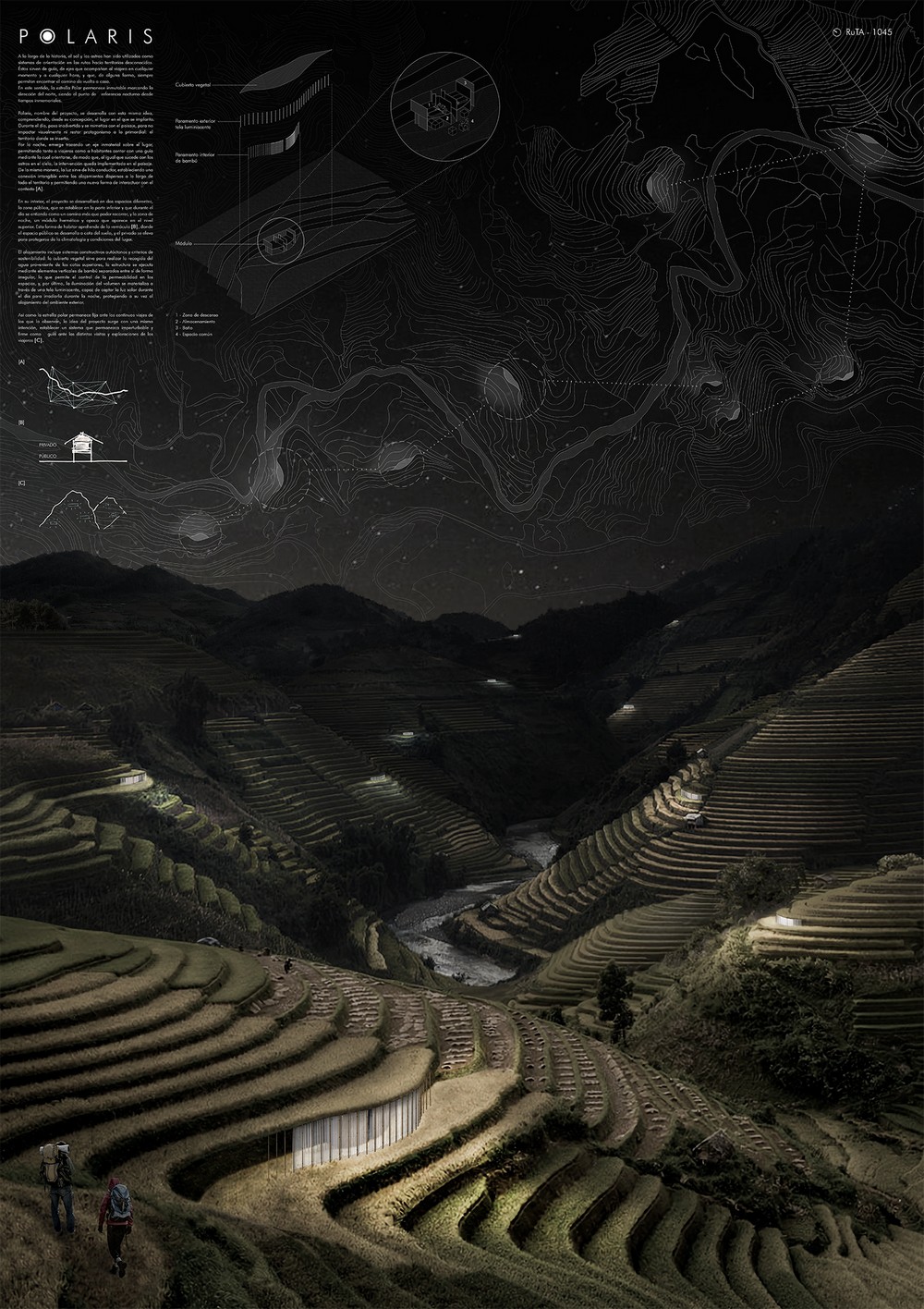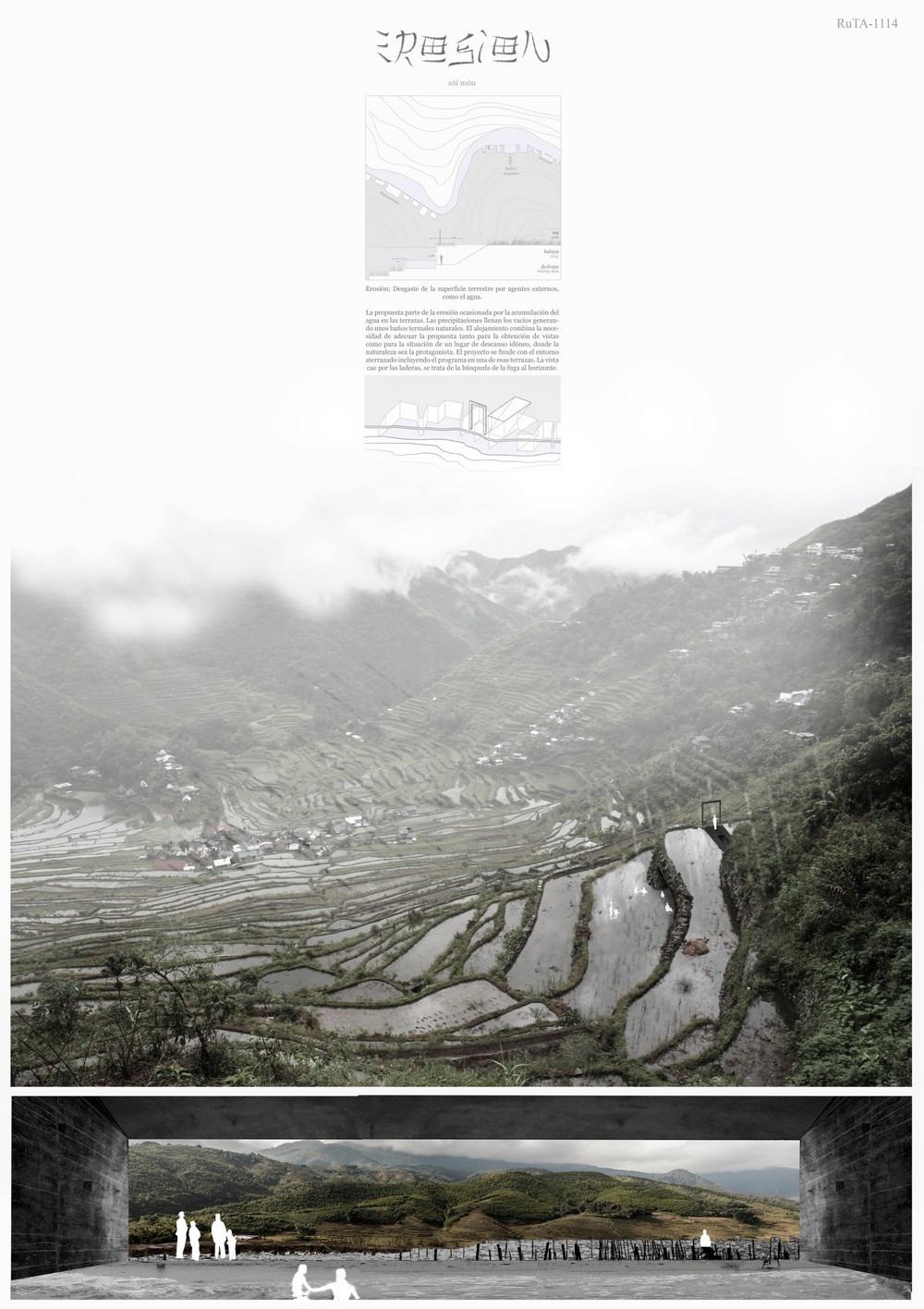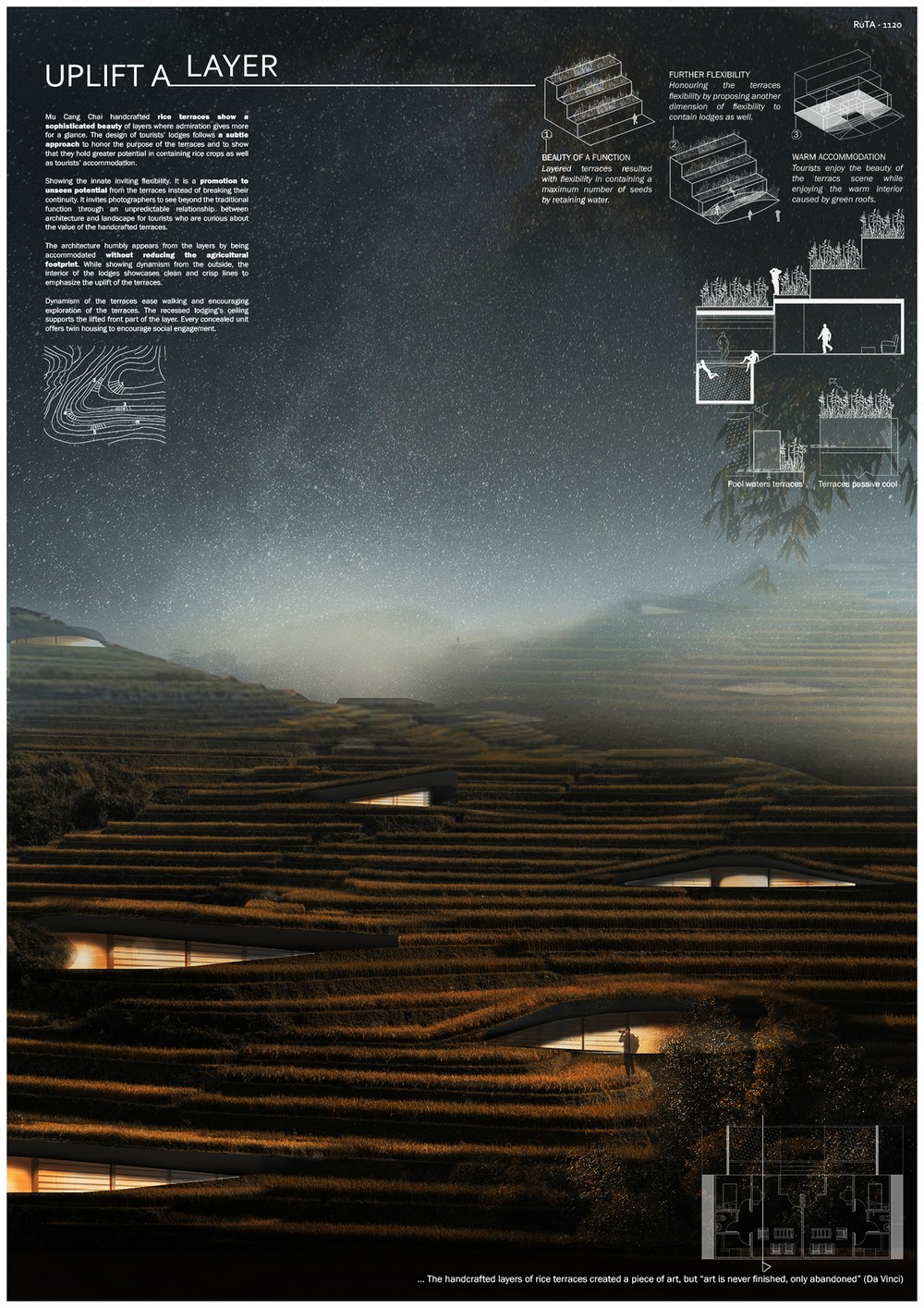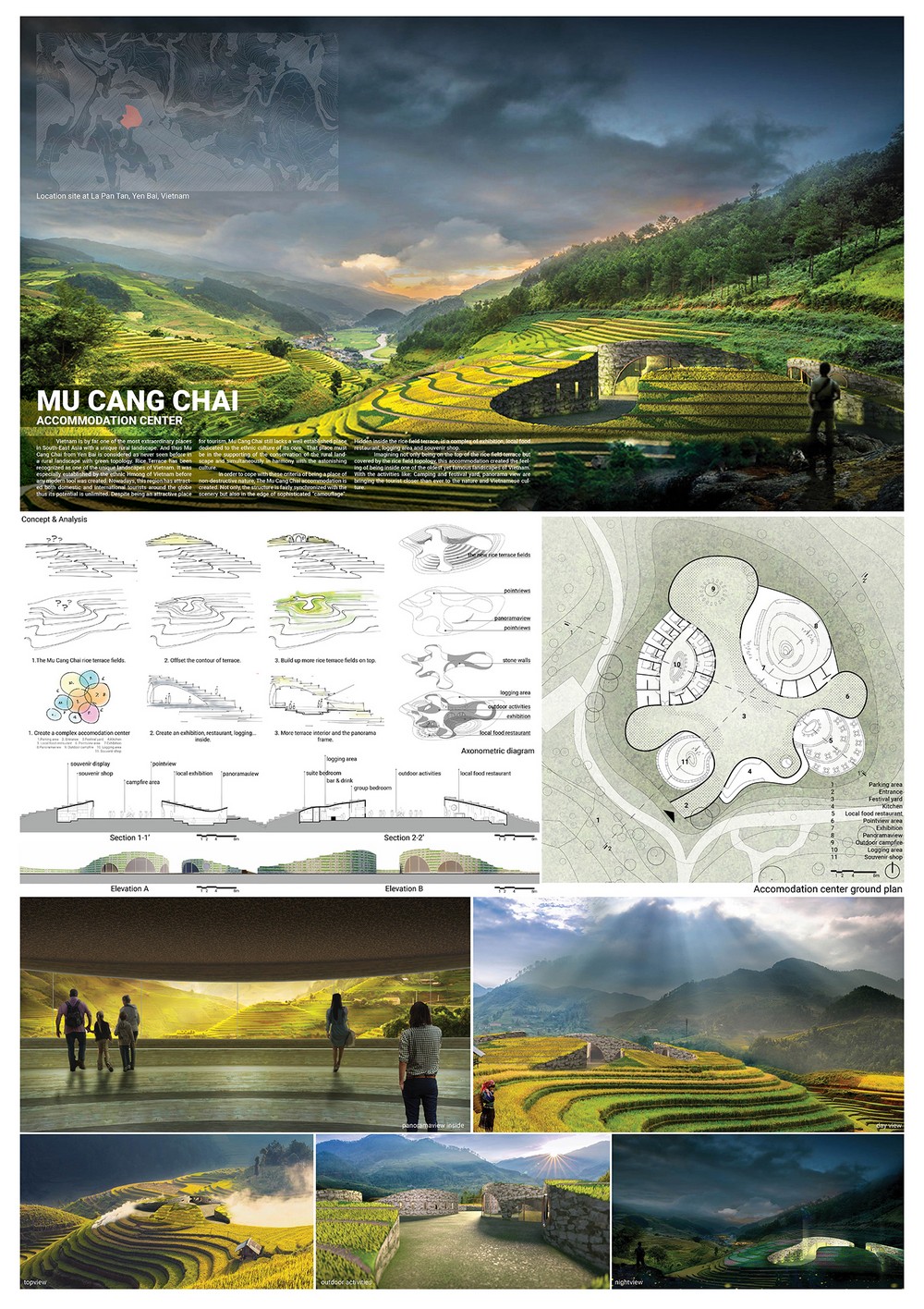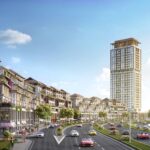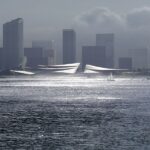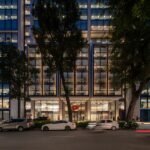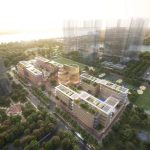Arquideas Rural Tourism Accommodation Vietnam Competition, RuTA Vietnamese architecture contest
Rural Tourism Accommodation Vietnam Competition: RuTA
12 Mar 2020
Arquideas Rural Tourism Accommodation (RuTA) Vietnam international architecture competition
Location: Vietnam
RuTA Vietnam international architecture competition
The Jury
– Huang Wenjing; Founding partner at OPEN Architecture
– Ingrid van der Heijden; Partner architect at Civic Architects
– Adrian Welch; Editor in Chief of e-architect
– Alejandro Beautell; Director at Beautell Arquitectos
– Martín Dulanto; Director at Martín Dulanto Arquitecto
– Juan Verdaguer, Ismael Preti y Carlos Brizuela; HPMP London competition winner team
Jury Decision
The Jury members of the Rural Tourism Accommodation (RuTA) Vietnam international architecture competition, having carefully considered all the 105 submitted proposals from 32 countries, made their evaluation in two stages in order to unify opinions and finding a fair verdict.
The Jury, considering the evaluation criteria specified in the Terms and Conditions, such as how clearly the ideas of the project are transmitted, the quality of the architectural proposal, the settlement criteria, as well as the dialogue between the proposal and the landscape, the solutions provided for the proposed program of uses, and the criteria of sustainability and energy efficiency, after the first phase of evaluation, highlights 20 proposals as finalists.
In a second evaluation phase, the Jury selected 5 honourable mentions and the 3 winning proposals.
As a group, these proposals represent the values the contest was trying to transmit, providing thoughtful and talented approaches to the set problem.
Arquideas RuTA Vietnam Competition Winners
Winners
1st Prize: RuTA 1154
Francisco Javier Polaina Luna Carlos Castaño Gil Universidad de Málaga, Spain
An elegant design, one of many proposals that picked up on the stepped curves of the hillside paddy fields.
The Jury members value the creation of a new topography that integrates in the building and follows the line curves of the existing terraces.
The way the proposal inserts swimming pools in a way they adapt to the terraces, simulating the times when the paddies are flooded, specially drew our attention. These are part of the landscape and only a few proposals have give them the necessary consideration.
2nd Prize: RuTA 1086
Mario Vera María Angosto Universidad de Zaragoza, Spain
Architecture does not hide in this proposal that has a great sensitivity regarding materiality and representation. The Jury views favourably a precise insertion of the horizontal work into the landscape. Surprisingly daring proposal, although it is at the same time sensible and respectful with land and its environment. Brave and subtle architectural element that, far from eclipsing nature, it complements it and makes it greater. Surprising and sensational proposal.
The Jury members value this proposal because it suggests a very responsible and respectful intervention in the landscape, denoting an understanding of the environment. This “path of the rice-fields” suggests a sensibility and an understanding of the environmental value.
It works using a strategy of camouflage. It achieves a development of the landscape and at the same time it provides a programme of uses and contemplation without affecting landscape textures that are characteristic to the place. It also enables the possibility of experiencing the landscape.
3rd Prize: RuTA 1043
Álvaro Núñez Mora Carlos Martín Beltrán Guillem garcía Manzana Miguel López Universidad Politécnica de Valencia, Spain
This proposal is characterised by resolving the program in a clear way. Architecture is present but it does not overcome the landscape of terraces. Its firm insertion into the landscape contraposes the majority of the proposals that look for a more direct way of adapting to the terraced ground.
Because of the clear and modest intervention in which the landscape remains almost untouched. By strongly framing the view from inside, a different experience is offered than when one is outside.
The Jury highlights the ambitious proposal. Radically different to the rest. It generates very interesting dramatic spaces with a cinematographic touch, that offer extraordinary views which could be especially attractive for tourists with an artistic sensitivity, like photographers. The only, but important problem is, that all visitors are condemned to see the same frame of landscape, they all will end up having the same views. It supposes a contrast to the landscape’s characteristic horizontal line, because of its use of vertical planes.
Non-invasive, it generates visuals and frames the landscape in a clean way. A sculptural way of bringing in a landscape that disappears in the horizon, but that it makes more impact when one is closer to the building.
We have some doubts in which concern the way of framing the landscape: it is based on photography but it limits a totally horizontal landscape to a vertical frame that discards any other horizontal framing.
Arquideas RuTA Vietnam Honourable Mentions
HONOURABLE MENTIONS
RuTA 1011
Lucas Sanio Juárez Universidad de Buenos Aires, Argentina
The Jury values the way the building lays of the land. Its intention to generate low environmental impact is a good idea, but it does not totally achieve this purpose. Great ideas and respect for land, environment and nature. However, it should have worked volumetry in a more sensitive manner for obtaining a less invasive result.
Interesting how the building locks to the different hights of the terrace in a subtle, non-aggressive way, for blending with the landscape. Precise work, in our opinion it could be better if it was capable of generating the very same artefact but in a smaller scale and in many more places, for not reducing such an enormous landscape to just a point of view.
RuTA 1045
Cristina Vivar Romero Beatriz González Yagüe Beatriz Fernández Concepción Carmen Espinosa Bruque Universidad de Sevilla/Universidad de Valladolid, Spain
A clever system of interventions on either side of the valley, locking into the topography in an appropriate and gentle way.
The Jury values the way it inserts into the terraced topography. Really clever, sensitive, subtle and respectful intervention. Really good outcome in which refers to volumetry, with no desire to be noticed, showing an important respect for land and its environment. The Jury members would also like to have a good words for its dynamic character, it appears and disappears on the landscape, appearing at night, as an artistic installation.
This is one of the projects that thrilled us, a series of gadgets dispersed in the landscape as lanterns or nocturnal posts that allow a new way of watching the place. During the day, as they stay under the line of each terrace, they camouflage and at the same time they recreate the look of the rice terraces using a sequence of parasols. Clever disposition of gadgets that invite visitors to walk the place for getting to know each gadget.
Instead of aggregation, this scheme disperses individual units into the whole valley area, each lightly sowed into the man-made nature, yet with the hope of forming a new type of community and vitalize a greater area.
RuTA 1114
Gonzalo López María Diez Revilla Universidad Politécnica de Madrid, Spain
The Jury members value its complete integration into the terraces. The difference between architecture and landscape disappears.
This proposal respects the land and its environment. Intelligent and precise way of appropriating the space with an almost chirurgical precision that does not harm the space.
Framing landscapes is one of the things that people ignore when designing when they are before a charming location. Not for nothing it is a resource that until less than a century ago was only employed by the greatest architects. In despite of its beauty, it is less popular than it should.
The basis of this good idea is simple: take advantage of the beauty of the landscape for “hanging a painting on our walls.”
This rather clever scheme unfolds in a linear way carved into one terraced layer of the site, harnessing the expansive vista while integrating itself seamlessly to the surrounding.
RuTA 1120
Mohamed Hesham American University in Cairo, Egypt
Beautifully presented simple drawings, with a solid design eschewing gimmicks.
The Jury values the formalisation and graphic quality of the proposal. It adapts to the existing topography by modifying it in a subtle way.
Although this proposal is really clever and has a daring attitude, the Jury members consider it losses power on its way. It should have been capable of finding a less aggressive way of landing on the ground. The chosen method breaks with the horizontal character of the terraces.
These “lanterns” generate a sophisticated nocturnal landscape and at the same time they make daily landscape disappear, reducing its footprint on the rice-fields through the superposition of layers that adjust to topography.
The dynamism provided by the terraces and how the make you feel like exploring them, drew our attention. At the same time, they provide the programme of uses.
RuTA 1232
Do Le Tuyen Ho Chi Minh City University of Architecture, Vietnam
Unlike most entries which are situated on the valley slopes this proposal places the intervention at the top of the gentle dome-headed hills. The design cuts neatly into the landscape, redolent of ancient domestic structures such as Skara Brae in Orkney. The mass is therefore mostly concealed, yet with openings out to enjoy the amazing views.
Notable central space which is result of emptying the mountain. Very interesting to work with the idea of mimesis, but, in this case, I think that it has not achieved a good result.
The Jury members highlight the participants not only speak about the concept of mimesis, but about creating new spaces that, hiding, refer users to nature, its history, and consequently, to its importance. However, these new proposed spaces lack from power and personality and they do not achieve their purpose.
Awarded Projects Summary:
RuTA 1011
Lucas Sanio Juárez
Universidad de Buenos Aires, Argentina
RuTA 1043
Álvaro Núñez Mora
Carlos Martín Beltrán
Guillem garcía Manzana
Miguel López
Universidad Politécnica de Valencia, España
RuTA 1045
Cristina Vivar Romero
Beatriz González Yagüe
Beatriz Fernández Concepción
Carmen Espinosa Bruque
Universidad de Sevilla/Universidad de Valladolid, España
RuTA 1086
Mario Vera
María Angosto
Universidad de Zaragoza, España
RuTA 1114
Gonzalo López
María Diez Revilla
Universidad Politécnica de Madrid, España
RuTA 1120
Mohamed Hesham
American University in Cairo, Egipto
RuTA 1154
Francisco Javier Polaina Luna
Carlos Castaño Gil
Universidad de Málaga, España
RuTA 1232
Do Le Tuyen
Ho Chi Minh City University of Architecture, Vietnam
Rural Tourism Accommodation Vietnam Competition images / information received 130320
Location: Vietnam
Vietnam Architecture
Vietnam Architecture Design – chronological list
Re-ainbow Community Facilities, Duc Tho, Ha Tinh Province
Design: H&P Architects
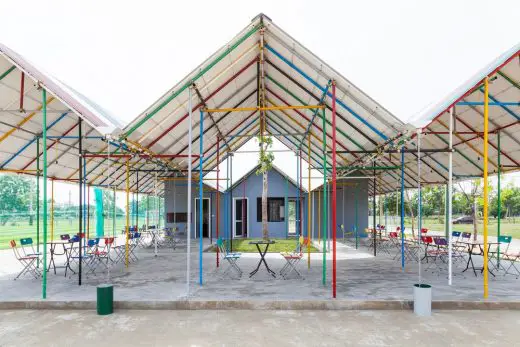
photo : Doan Thanh Ha
Re-ainbow Community Facilities in Duc Tho
Mành Mành Salon, Van Quan urban zone, Ha Dong district, Hanoi
Design: H&P Architects
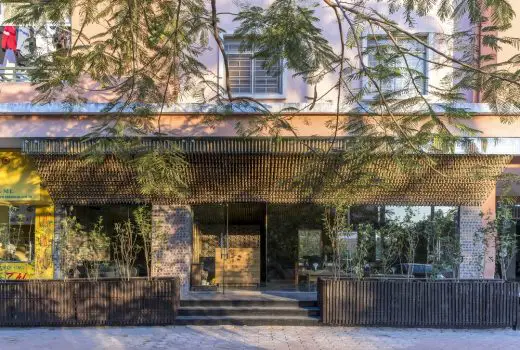
photo : Nguyen TienThanh
Mành Mành Salon in Hanoi
New House in Phu Nhuan, Ho Chi Minh city, Vietnam
Design: Truong An architecture
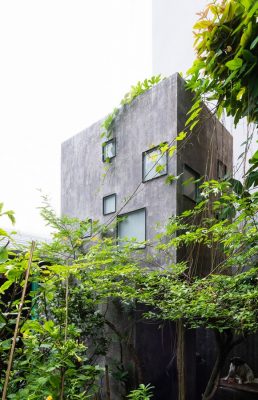
photos : Quang Tran, Gia Hung
Contemporary House in Phu Nhuan
The Drawer House, Vung Tau
Architects: MIA DESIGN STUDIO
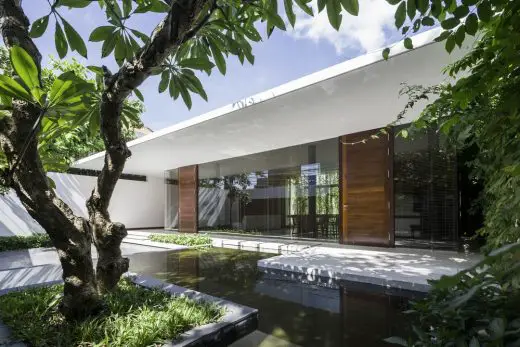
photo : Hirouyki Oki
New House in Vung Tau
Comments / photos for Rural Tourism Accommodation Vietnam Competition page welcome

